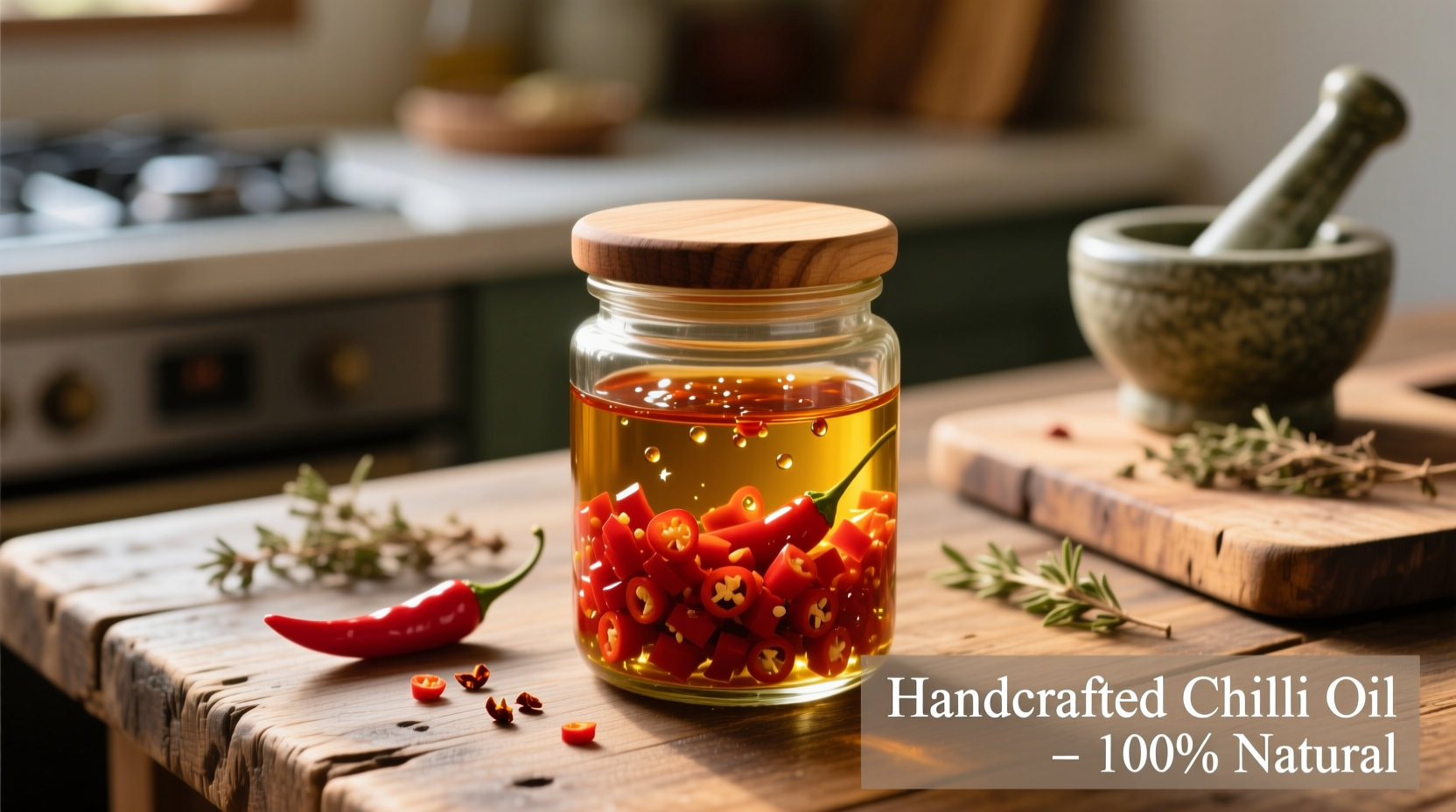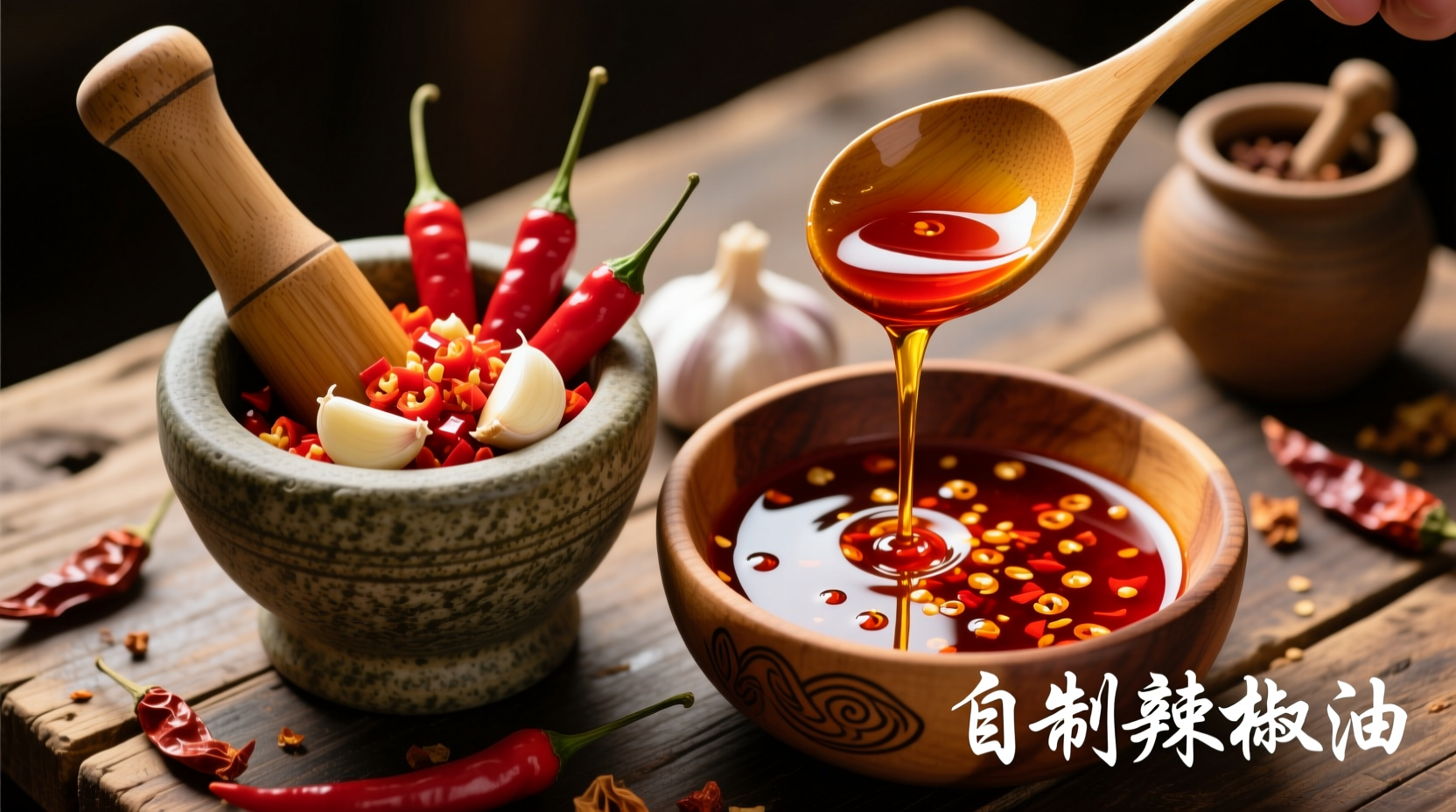Why Fresh Chilli Oil Beats Store-Bought Every Time
Homemade chilli oil with fresh ingredients delivers unmatched flavor complexity you simply can't find in commercial products. While store varieties often rely on dried chilies and artificial additives, fresh chillies provide brighter, fruitier notes with nuanced heat that evolves beautifully during infusion. Professional chefs like Chef Liu Wei confirm that "fresh chilies contain volatile aromatic compounds that degrade during drying, making fresh versions superior for capturing authentic regional flavors".

Your Complete Fresh Chilli Oil Roadmap
Follow this proven sequence that mirrors how experienced cooks actually prepare chilli oil - from ingredient selection through storage. Each phase addresses specific challenges you'll encounter.
Phase 1: Smart Ingredient Selection (5 Minutes)
Choosing the right components makes or breaks your chilli oil. Don't waste time with inferior ingredients:
- Fresh chilies: Use 150g mixed varieties (50% mild like Fresno, 30% medium like Jalapeño, 20% hot like Thai bird's eye) for balanced heat. According to USDA agricultural research, fresh chilies contain 20-30% more capsaicinoids when harvested at peak ripeness
- Garlic: 6 large cloves, peeled but left whole to prevent burning
- Oil: 500ml neutral oil (grapeseed or avocado) - never olive oil which smokes at infusion temperatures
- Flavor enhancers: 2 star anise, 1 cinnamon stick, 1 tbsp Sichuan peppercorns (optional)
| Chili Variety | Heat Level (Scoville) | Flavor Profile | Best For |
|---|---|---|---|
| Fresno | 2,500-10,000 | Fruity, slightly smoky | Base flavor |
| Jalapeño | 2,500-8,000 | Grassy, bright | Mid-level heat |
| Thai Bird's Eye | 50,000-100,000 | Sharp, intense | Heat kick |
Phase 2: Critical Preparation Steps (10 Minutes)
Avoid these common pitfalls that ruin homemade chilli oil:
- Dry chilies thoroughly: Pat completely dry with paper towels - any moisture causes dangerous oil splattering
- Controlled slicing: Slice chilies lengthwise into 1/4" strips (don't remove seeds for maximum flavor)
- Garlic safety: Leave cloves whole - the FDA warns that minced garlic in oil creates botulism risk
- Equipment: Use heavy-bottomed saucepan (not non-stick which can't handle temperature changes)
Phase 3: Precision Infusion Process (15 Minutes)
Temperature control separates professional results from amateur attempts. Follow this exact sequence:
- Heat oil to 160°F (71°C) - use thermometer, don't guess
- Add whole garlic cloves, heat 3 minutes until lightly golden
- Remove garlic (reserve for other uses)
- Reduce heat to 140°F (60°C)
- Add chilies and spices, maintain temperature for 10 minutes
- Remove from heat, cool 5 minutes
- Strain through fine mesh sieve into sterilized glass jar
Key science insight: This two-stage temperature process first extracts garlic compounds without burning, then optimally releases chili capsaicinoids at lower temperatures. As culinary chemist Harold McGee explains in On Food and Cooking, "capsaicin dissolves best in oil between 130-150°F - higher temperatures degrade delicate flavor compounds".
Phase 4: Storage and Usage Guidelines
Maximize shelf life and safety with these professional techniques:
- Refrigeration is mandatory: Store in airtight container for up to 4 weeks (room temperature storage risks botulism)
- Layering technique: Place reserved garlic slices on bottom of jar before adding oil for decorative presentation
- Usage tip: Shake gently before use - sediment is natural and flavorful
- Freezing option: Pour into ice cube trays, freeze, then transfer to bags for 3-month storage
When This Method Works Best (And Limitations)
Understanding context boundaries prevents kitchen disasters:
- Ideal for: Immediate use (within 4 weeks), custom heat levels, authentic Asian cuisine applications
- Not suitable for: Canning or shelf-stable preservation (requires acidification which alters flavor)
- Altitude adjustment: Reduce target temperature by 2°F for every 1,000 feet above sea level
- Oil warning: Never reuse oil that's contacted raw meat before making chilli oil
Customization Options From Professional Kitchens
Transform your basic chilli oil with these chef-approved variations:
- Umami boost: Add 1 dried shiitake mushroom during infusion
- Citrus twist: Include lemon or orange zest with chilies
- Smoky version: Char chilies over open flame before slicing
- Sweet balance: Add 1 tsp honey during final cooling phase
Troubleshooting Common Issues
Solve these frequent problems before they ruin your batch:
- Bitter oil: Caused by overheating - start over at lower temperature
- Weak flavor: Increase chili quantity by 25% or extend infusion time by 5 minutes
- Cloudy appearance: Normal during cooling - should clear within 24 hours
- Excessive heat: Add more oil and a splash of vinegar to mellow intensity
Frequently Asked Questions
Can I use dried chilies instead of fresh in this recipe?
Yes, but with significant flavor differences. Use 30g dried chilies soaked in hot water for 20 minutes. Dried chilies provide deeper, smokier notes but lack the bright fruitiness of fresh varieties. Reduce oil quantity by 25% since dried chilies absorb more liquid.
Why must I refrigerate homemade chilli oil?
Garlic-in-oil mixtures create ideal conditions for botulism without proper acidification. The FDA requires refrigeration of all garlic-infused oils to prevent dangerous bacterial growth. Never store at room temperature for more than 4 hours.
How do I adjust heat level for sensitive palates?
Remove seeds and white membranes from hottest chilies, increase mild chili proportion to 70%, and add 1 tbsp toasted sesame oil at the end to mellow heat. The capsaicin concentration is highest in seeds and inner membranes.
Can I double the recipe for larger batches?
Yes, but maintain the same surface-area-to-volume ratio. Use multiple pans rather than one oversized pot to ensure even heating. Never exceed 75% capacity in any single vessel to prevent dangerous boil-overs during temperature changes.











 浙公网安备
33010002000092号
浙公网安备
33010002000092号 浙B2-20120091-4
浙B2-20120091-4